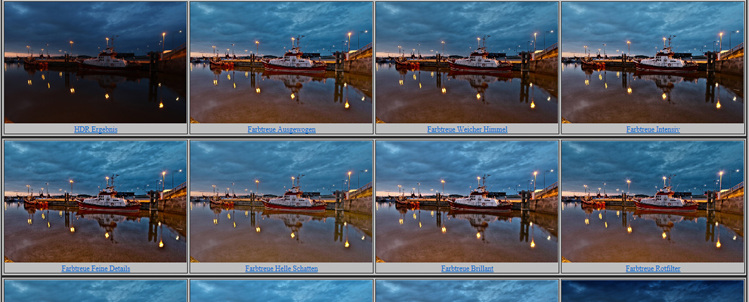
Slide it to the far right and it will create a natural distribution of light, where the highlights, midtones and shadows are correctly placed. In Photomatix it's called Lighting Adjustments. In HDR programs, there is usually a slider that changes the emphasis of light. This fits in with our last point but it is relevant in every aspect of the image. A very common ‘mistake' in HDR images is to have the sky darker than the foreground, or shadows the same brightness as the midtones, or midtones brighter than the highlights. It is your job, as the master of the sliders, to control how that image is rendered. It doesn't know the difference between the sky and a car, for example, so it can't process images in terms of specific objects or areas. With a simple click of a button you can blend multiple exposures to leave you with an image that far surpasses a single exposure in terms of range of light. There are some incredible HDR programs available today.

Maintaining Proportional Luminosity Values But I then darkened the rocks further, losing detail in the process, in order to not distract the viewer's eye from the main points of interest and to increase the overall mood of the image. Photo by Jimmy McIntyre.įor this image, I used three separate exposures to recover the highlights in the bridge and bring detail into the rocks. Below are two images where I've liberally clipped areas in order to affect mood. In the end, without these, we can be left with flat images that simply don't move people. Here's the thing, shadows are absolutely paramount in creating mood, and strong bursts of light allow our images to explode with energy. Ultimately, shadows within our images begin to dwindle and our shots sometimes lack highlights. The trend, therefore, is for HDR photographers to avoiding clipping at all costs. Our goal is to create a range of light much closer to that in the real scene than our camera is capable of catching in a single frame. HDR, by its very definition, serves to rescue highlights and darkened parts of a scene. Keeping Shadows and Highlights to Increase Mood and Energy
HDR PROJECTS 4 VS PHOTOMATIRX PRO
But for those of you who have NIK's Color Efex, there's a nifty slider hidden under the Pro Contrast filter called ‘Correct Color Cast' that often does an incredible job of removing colour bleeding and restoring natural colouring.Īnother important colour correction method for those of you without Color Efex is to establish white points in Photoshop. This could require a workflow unto itself depending on the scene and how it was shot. I never move the saturation slider beyond 35.Īfter this (or before, depending on your workflow), we HDRists then have to colour correct in the same way that other photographers do. Despite this being its default setting, for me it is far too strong. When you choose the Default preset, the saturation slider sits on 45. Often, the culprit is the Saturation slider in HDRsoft's Photomatix.
HDR PROJECTS 4 VS PHOTOMATIRX HOW TO
However, knowing how to control the colours in our image to increase their impact is at the heart of all colour photography. The shot I used at the top of this article shows how fond I am of powerful colours. There's nothing wrong with strongly coloured images. One of the biggest complaints from non-HDR fans is the often over-the-top cartoony colouring that seems to come with tone mapped images. Instead, I'm going to leave you with a number of suggestions that have been vital in the development of my workflow and imagery which you can, if you choose, adapt into your own style. With that in mind I hope not to frame this article in a way that limits your creative juices by saying ‘don't do this'. As artists, there is no such thing as a useless tool – we just haven't discovered a use for it yet.

When it comes to HDR, I love surreal and realistic images and remain as open minded as possible in terms of workflows and processing methods. Puerto Natales – Chile (A luminance mask HDR).


 0 kommentar(er)
0 kommentar(er)
